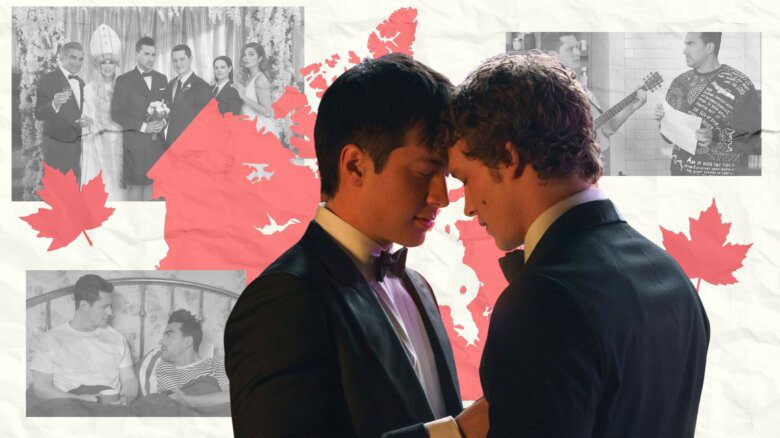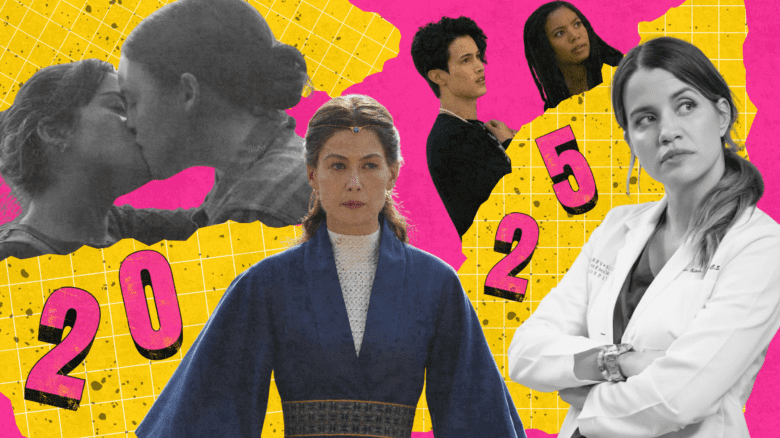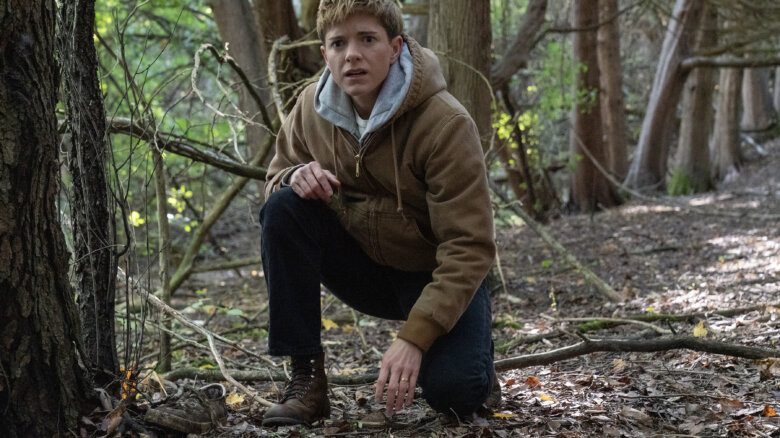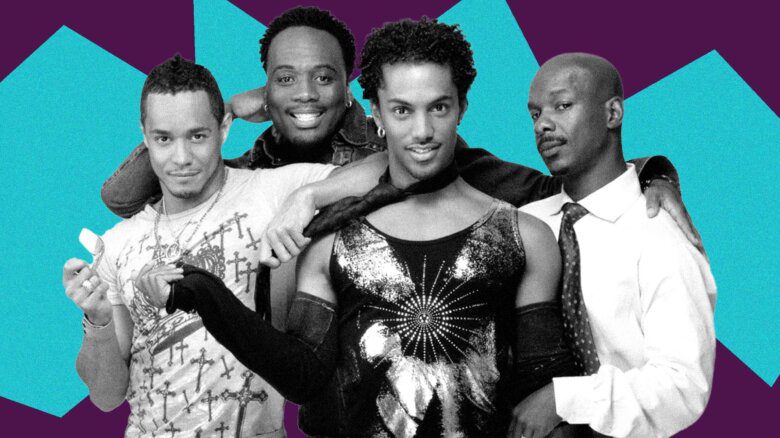For all of 2020’s chaos, the world of reality TV remained fairly stable. Seasons shot before the COVID-19 pandemic rolled out without issue, and kept us entertained when we desperately needed entertainment. Even those shows that could shoot during a pandemic—think The Bachelorette and Big Brother All-Stars—distracted us, although we did find ourselves occasionally fretting over safety protocols.
But with this awful year set to end and 2021’s reality TV series right around the corner (hello, RuPaul’s Drag Race Season 13) we should take a moment to remember the best, brightest and queerest reality moments and personalities from 2020. Who kept us hopeful in seemingly hopeless times? Who kept us company when we were busy baking bread in the early pandemic? Who broke barriers, thrilling us along the way? Here are our top five contenders.
The Circle had a healthy dose of gay power

Launched right at the start of the year before quarantining would become our daily norm, Netflix’s The Circle presented lockdown as a unique, extraordinary challenge. How can you charm a group of competitors and win a prize solely based on your communication style over social media? It proved too daunting a task for many contestants, several of whom chose to “catfish” their competitors as someone other than themselves.
Among the fishbowl of fakers, however, was Chris Sapphire, who was not a catfish but fully and completely himself. As extra as he could be (“Come on, being outside!” he exclaimed in his intro package), Chris’ transparency paid off handsomely on the show. Though he didn’t take home the top prize, he made it all the way to the finale and earned overjoyed reactions from his fellow finalists when they found out he was actually who he said he was. From the GIF- and meme-worthy reactions to his honest, bracingly real journey to The Circle as a religious gay man, Chris gets our kudos for bringing “real” to “reality.”
The internet went wild for Joe Exotic

The early pandemic will be remembered for a few different things: Our collective uncertainty about the future, a lot of bread-baking and Tiger King. The Netflix docuseries (subtitled: Murder, Mayhem and Madness) told the ludicrous true story of zookeeper Joe Exotic and big cat conservationist Carole Baskin. Attempted murder-for-hire, a gay throuple, a presidential run and more all come into play in a story that landed Joe behind bars for a 22-year sentence and later got Carole onto the 29th season of Dancing With the Stars.
While you could definitely argue the obsession got a bit out of hand—there’s been a lot of talk about outgoing President Donald Trump potentially pardoning Joe Exotic—it’s easy to understand why. At a time when most of us were cooped up and starting to go a little stir-crazy (oh, how naive we were back then), Tiger King activated all the senses in spectacular, incredibly queer fashion. Will it be the show we’re most proud to have watched in the years to come? Maybe not. But it can be our collective guilty pleasure.
Jaida Essence Hall won RuPaul’s Drag Race—via Zoom

At the very heart of drag is a spirit of inventiveness: Using what you have to glam up, put on a show wherever you can and entertain despite the odds being stacked against you. For all their pleasures, recent seasons of RuPaul’s Drag Race have become a bit too big-budget compared to the series’ earliest, crunchiest days. Winning All Stars without an expensive wardrobe is nigh impossible; the guest judges are no longer queer cult favourite personalities, but major movie and TV stars.
So while it may have been necessitated by COVID-19, the physically distant finale nevertheless brought a spirit of ingenuity and can-do-ism back to the series. Instead of lip-syncing for the crown in front of screaming masses, the top three produced digital drag performances on their own. Instead of celebrating the winner in an opulent Los Angeles theatre, RuPaul crowned Jaida Essence Hall over what was effectively a Zoom call. It was all so perfectly drag; a reminder of what originally made this series great. I can’t imagine Drag Race ever having a finale like this again, but for this year it was the perfect queer solution to a daunting problem.
Introducing the first openly gay son of a Real Housewives series: Brooks Marks
The Real Housewives of Salt Lake City (RHOSLC), which premiered in November, offered a decidedly different take on the Housewives formula. For one, the series focuses heavily on the Mormon Church and how the cast’s different faiths interact with each other. For another, the cast is the most diverse the franchise has ever seen—notable for a series that often keeps its casts all one ethnicity.
But a surprise development of RHOSLC was the introduction of Brooks Marks, son of housewife Meredith Marks. He is the first openly gay son of a Real Housewife—though not the first child to be a member of the LGBTQ2S+ community, lest we forget Real Housewives of Atlanta (RHOA) housewife Cynthia Bailey’s sexually fluid daughter, Noelle Robinson. What makes Brooks’ inclusion in the show remarkable is not just the comic relief he brings—although the fact that he took a semester off to stay at home with his mom while she became a Real Housewife is indeed a mood. No, what matters is that, for quite some time, Real Housewives has been a franchise that has tokenized gay men as friends, as stylists, as one-dimensional side characters. To prominently feature a gay person—and more than that, a gay son—is a major step forward for Bravo’s flagship series.
An honourable mention must go to Braunwyn Windham-Burke, the Real Housewives of Orange County (RHOC) housewife who became the first to come out as a lesbian (though, again, not the first queer housewife—that’s the bisexual Kandi Burruss of RHOA). Braunwyn’s story is significant, but since she just came out in an interview with GLAAD and that story hasn’t been featured on RHOC yet, we’ll have to save it for 2021’s queerest reality TV moments instead.
Melissa King became the second Top Chef: All Stars winner

I saved my personal favourite for last: Melissa King’s victory on Top Chef: All Stars L.A. A delight in her original season (Boston), Melissa was a favourite when she entered the Bravo cooking series’ second All Stars incarnation. But she faced some incredibly stiff competition, including three of the top four finalists from the ultra-competitive Las Vegas season (Bryan Voltaggio, Kevin Gillespie and Jen Carroll).
But halfway through the season, Melissa had proven she was more than ready to take home the crown. She won three elimination challenges before the midpoint, and never fell in the lower-scoring group on any task. (She started to backslide a bit with three bottom group appearances in a row, though she never felt truly at risk of elimination.) When it came time for the multi-part finale, Melissa turned up the heat. She won all three elimination challenges before the final three, giving herself an impressive performance record for the season. Then, in a battle with Bryan and New Orleans returnee Stephanie Cmar, she put the final flourish on her victorious march to the title.
One of just a few gay winners of Top Chef, Melissa took home both the season’s title and the Fan Favourite prize (a feat only two previous winners have pulled off). It was a triumph for queer fans of the show. That it was an All Stars victory made her win even sweeter, but Melissa’s choice to donate the Fan Favourite prize money to charities like The Trevor Project, Black Visions Collective and Asian Americans for Equality was the icing on the cake. On this season of Top Chef, King was truly queen.


 Why you can trust Xtra
Why you can trust Xtra


